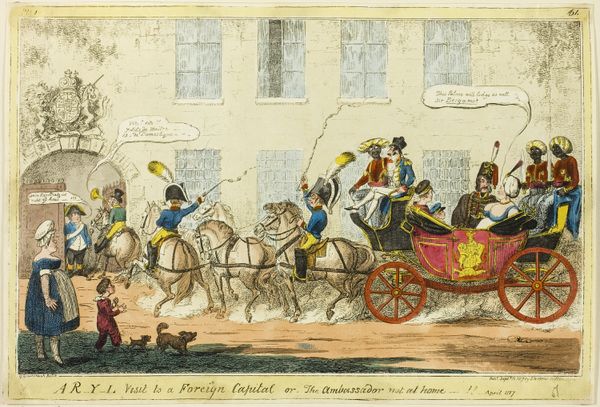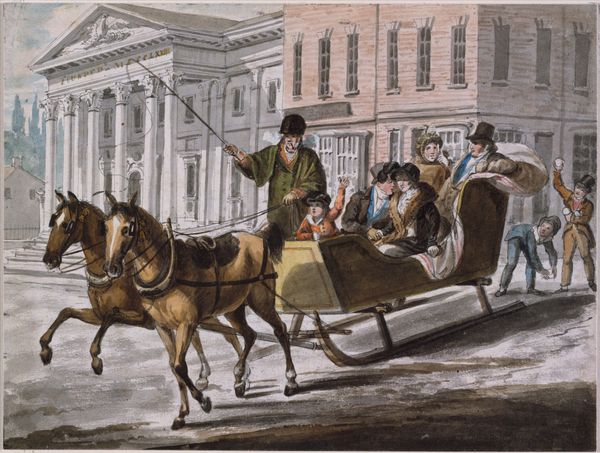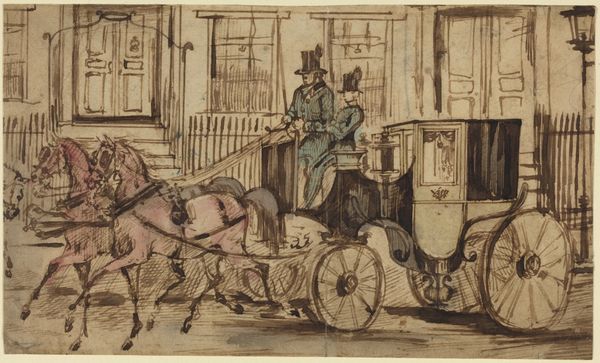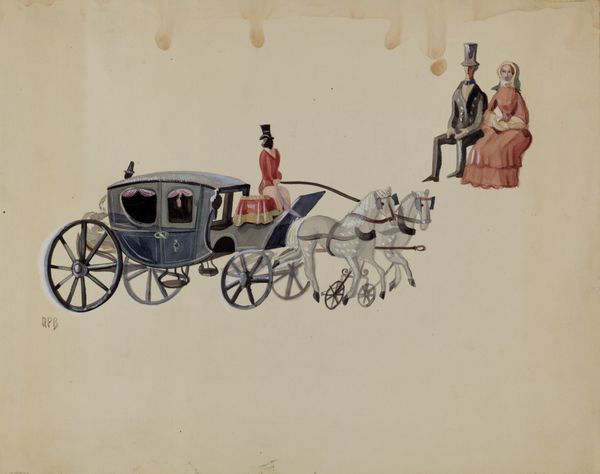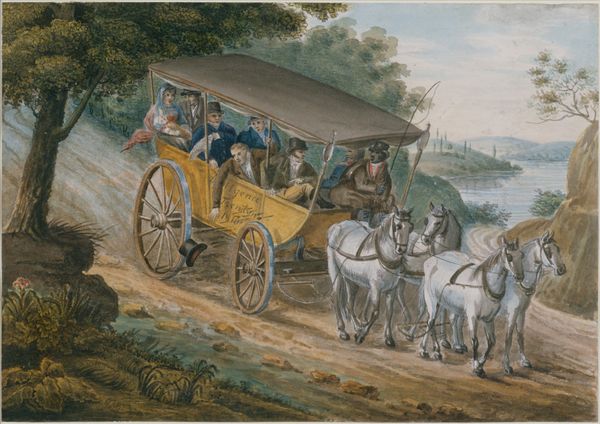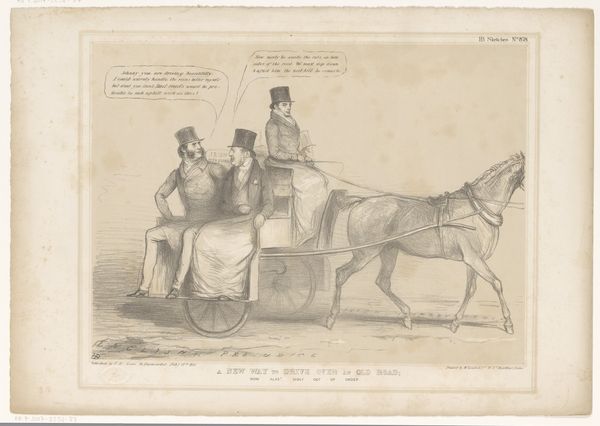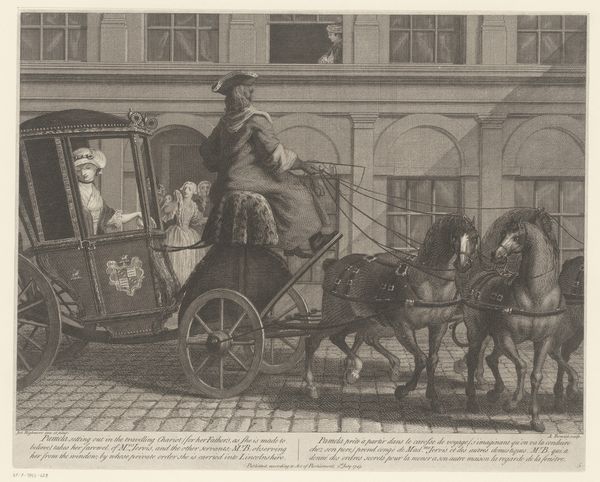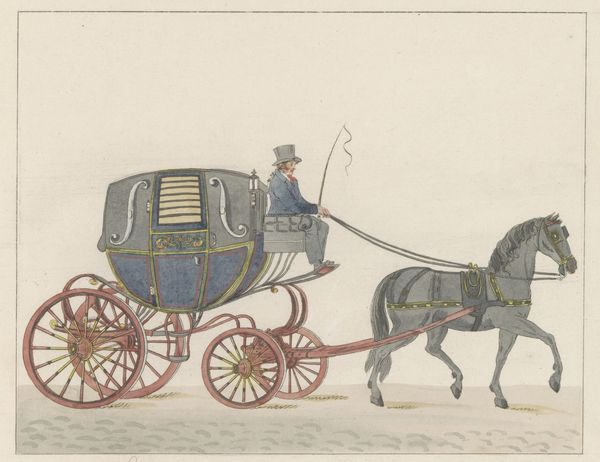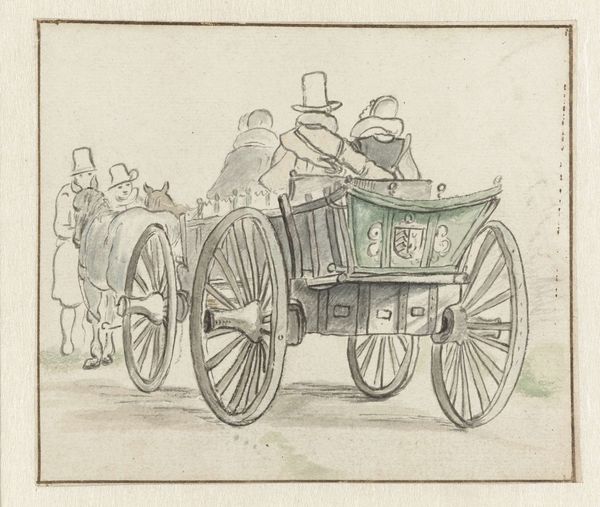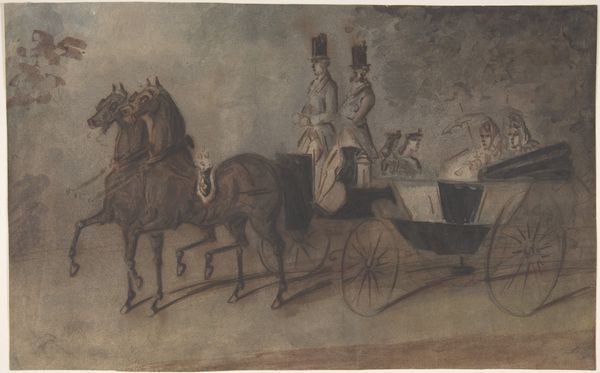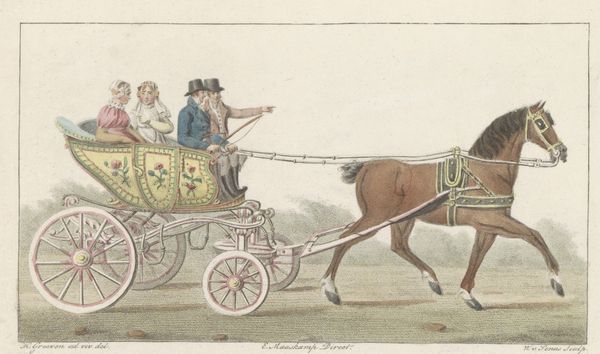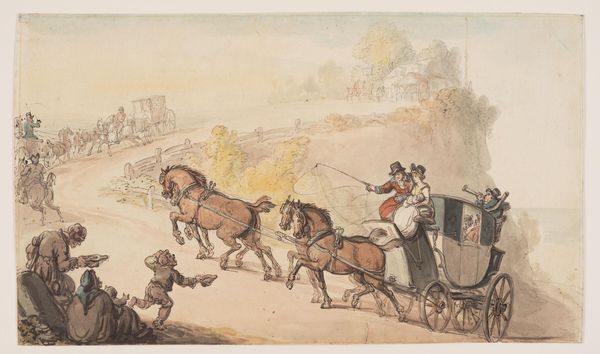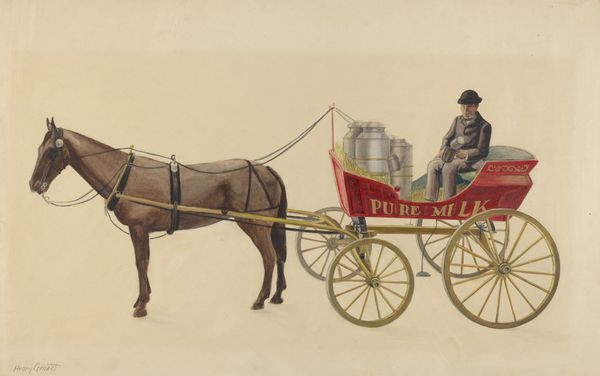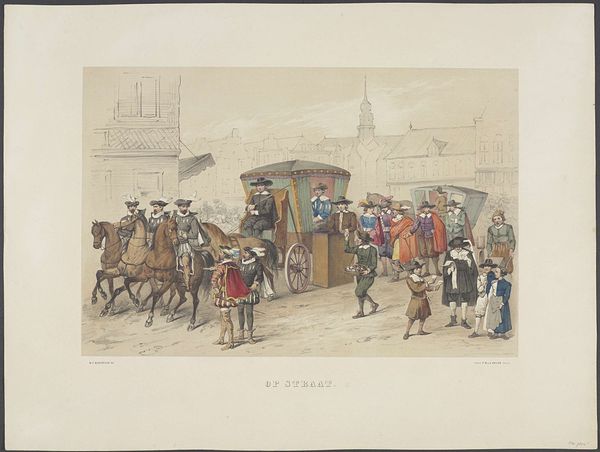
drawing, print, paper, watercolor
#
drawing
# print
#
landscape
#
paper
#
oil painting
#
watercolor
#
romanticism
#
cityscape
#
watercolour illustration
#
genre-painting
Copyright: Public Domain
Editor: So, here we have William Havell's "The Blenheim, Leaving the Star Hotel, Oxford," dating to 1831, done with watercolor and possibly other mediums on paper. It really captures a moment, like a snapshot, doesn’t it? What’s your interpretation of it? Curator: Well, seen through a historical lens, this isn't merely a snapshot, but a crafted image participating in the rising culture of tourism and the celebration of England's provincial life. Think about it: this piece was created as a print, something easily reproduced and distributed. Havell, probably intentionally, depicted not just a stagecoach, but a spectacle linked to larger cultural narratives around travel, class, and social mobility. Editor: That's fascinating, the thought of social mobility being represented by the stagecoach! It seems almost commonplace. How much do you think he was romanticizing the scene versus accurately portraying it? Curator: Interesting question. It's likely a deliberate mix. Romanticism was, after all, interested in idealized versions of reality, and picturesque compositions became popular subjects. The “Star Hotel” in Oxford becomes a stage for viewing the social theater as stagecoaches carried more people with means. Consider how inns and travel infrastructure became sites for staging displays of social hierarchy, especially for those visiting, doing business or attending university in Oxford. Editor: So, it's less about objective truth and more about shaping perception, wouldn’t you say? Did these images promote leisure, travel, or a particular British identity? Curator: Precisely. Images such as this functioned as social commentary and promotional material; selling the experience of a vibrant, upwardly mobile, picturesque England and promoting leisure and social connection, but framed for public consumption, through printed circulation. They certainly played a role in shaping a British identity that valued both its historical roots and its burgeoning modern society. Editor: Wow, I hadn’t considered how something that appears so simple is, in fact, carefully designed to project a specific image to society. Curator: It goes to show that art is never created in a vacuum. It's intertwined with cultural, social, and economic factors, actively participating in those discourses.
Comments
No comments
Be the first to comment and join the conversation on the ultimate creative platform.
